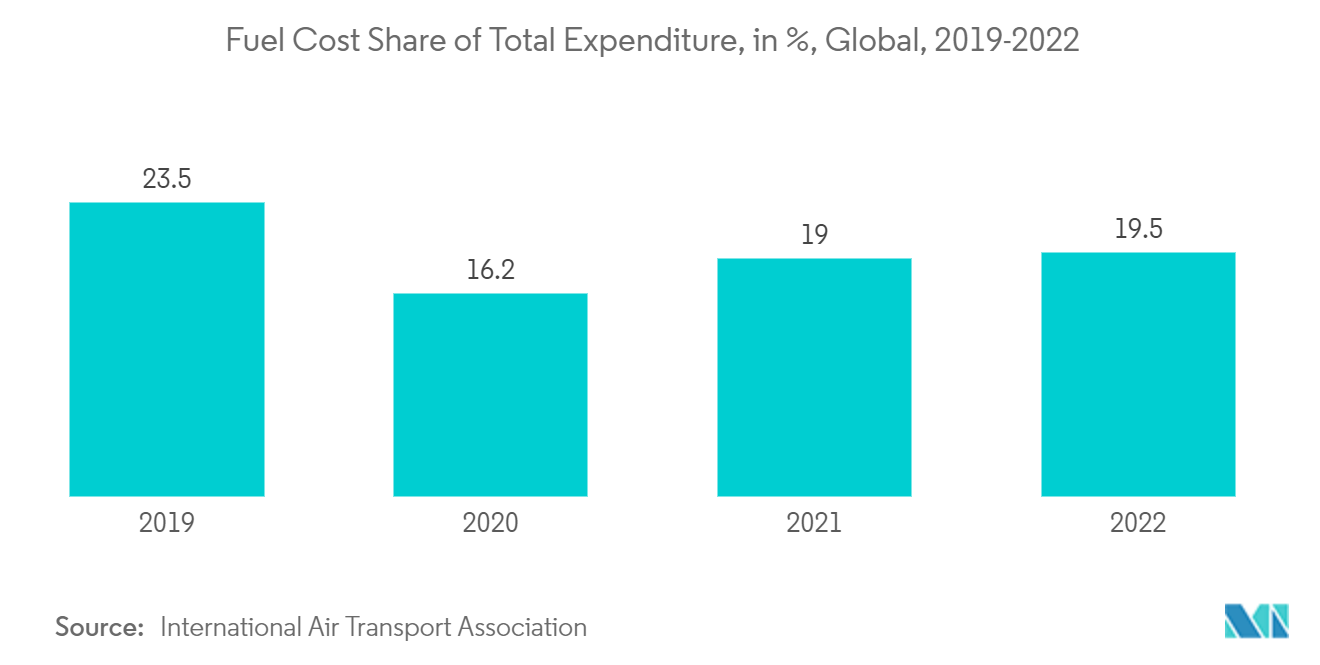Market Trends of Commercial Aircraft Aviation Fuel Industry
Air Turbine Fuel (ATF) Type to Dominate the Market
- Jet-A-specified fuel has been used in the United States since the 1950s, and it is usually not available outside the United States and a few Canadian airports, such as Toronto and Vancouver. Jet-A has the same flash point as Jet-A1 but a higher freeze point maximum (-40°C). It is supplied against the ASTM D1655 (Jet A) specification. Jet A1 is suitable for most turbine-engine aircraft. It has a flash point minimum of 38 °C (100°F) and a freeze point maximum of -47 °C. Jet A1 is widely available outside of the United States.
- LanzaTech's ethanol-based ATJ-SPK was made eligible for use as a blending component with standard Jet-A for commercial airline use in the United States and in most countries around the world. Under the revised ASTM D7566, LanzaTech ATJ-SPK is eligible to be used up to a 50% blend in conventional jet fuel for commercial flights.
- Jet-A fuels have been witnessing developments from universities in recent years. For instance, in June 2021, researchers at Washington State University developed a process for turning waste plastics into sustainable jet-A fuel. If the process is refined and applied on a large scale, the procedure is expected to address major environmental problems, including greenhouse gas emissions and plastic pollution.
- The primary industry classifies the cities with the most aviation connectivity and international passengers as "aviation megacities" (AMC). According to Airbus, there are 66 AMCs, with over 60% of traffic flying to and from these cities and 17% between AMCs alone. With the increase in AMCs across the world, long-haul flights are increasing exponentially, driving the demand for jet fuels and thus increasing the demand for aviation fuel in the commercial sector.
- Therefore, based on the above-mentioned factors, air turbine fuel (ATF) is expected to dominate the commercial aircraft aviation fuel market during the forecast period.

Asia-Pacific to Dominate the Market
- Asia-Pacific is one of the significant aviation fuel markets in the commercial segment. In recent years, the fastest-growing markets, such as India and Southeast Asia, are increasingly contributing to the region's growth as these emerging economies have been endorsing robust passenger growth. As per the International Air Transport Association (IATA), in the Asia-Pacific region, countries including China, India, Indonesia, and Vietnam are expected to witness the highest passenger traffic by 2035.
- Furthermore, the Boeing Commercial Market Outlook (CMO) 2021-2040 says that the number of people traveling between the regions will go up a lot by 2040. So, the rise in passenger traffic is likely to give everyone in the supply chain, especially in emerging regions, a lot of chances to grow and meet the growing demand in the future.
- Also, commercial airline fleets have been growing over the past ten years, and as of January 2022, there were 22,799 planes in use around the world. The number of passengers is directly related to the number of commercial flights, and both Boeing and Airbus are steadily getting more orders and delivering more planes.
- China is one of the largest aviation fuel markets globally, and it is also one of the largest in terms of air passengers carried. As of 2021, domestic passengers in China were the second largest in the aviation market after the United States.
- Japan Airlines (JAL) and All Nippon Airways (ANA) are the two largest commercial airlines in Japan. However, low-cost carriers (LCCs) like Peach Aviation, Jetstar Japan, and Vanilla Air are gaining market share and boosting the aviation market in the country.
- Based on all of these factors, Asia-Pacific is expected to lead the market for aviation fuel for commercial aircraft during the forecast period.


